Walsh Bay’s history encompasses significant Aboriginal sites, a thriving maritime trade, the struggles of The Hungry Mile and a reimagined purpose as a home for performing arts on the harbour.
Walsh Bay Arts Precinct history
Aboriginal settlement
Walsh Bay is surrounded by significant Aboriginal sites, sightlines and Country with Tara Dawes Point to the immediate east and Coodyee Millers Point and the Barangaroo Headland to the west. An important aspect of Country is Sydney Harbour’s deepest point which lies about 25 metres from the shoreline opposite Blues Point, sinking to a depth of 45 metres below sea level. Standing at the end of Pier 2/3, your view is cast toward this site. Although it exists beneath and beyond our eyesight, this is a site of re-imagination and contemplation.
Britain’s First Fleet of 11 ships sailed into Port Jackson, Sydney, in January 1788. During the first decade of British occupation, several First Fleet artists sketched portraits of notable Aborigines and scenes of their daily activities: spear-fishing, canoeing, collecting cockles, cooking around campfires and sleeping in bark teepees. Within the first two years of British settlement, several thousand Indigenous inhabitants died from smallpox and other infections, or murders by the new developers of their homeland.
1800s early European settlement
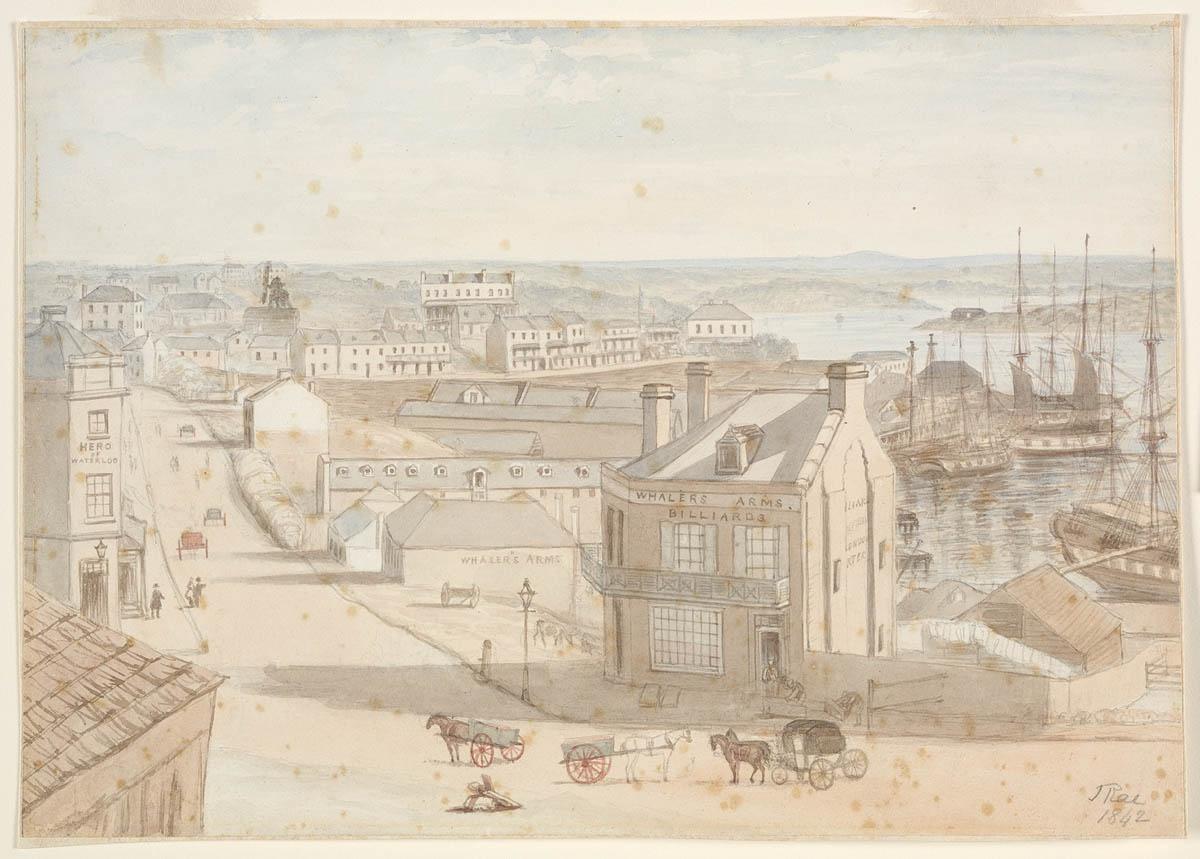
As Port Jackson prospered, its cargo shipping facilities expanded to the waterfront between Dawes Point and Millers Point in the 1820s. By the mid-1800s, Dawes Point – named after Lieutenant William Dawes - was a thriving maritime community with a cross-section of rich and poor working alongside each other as traders and wharfies, owners and storemen, and those departing and arriving on the multitude of ships that docked at the piers.
The Wool Trade
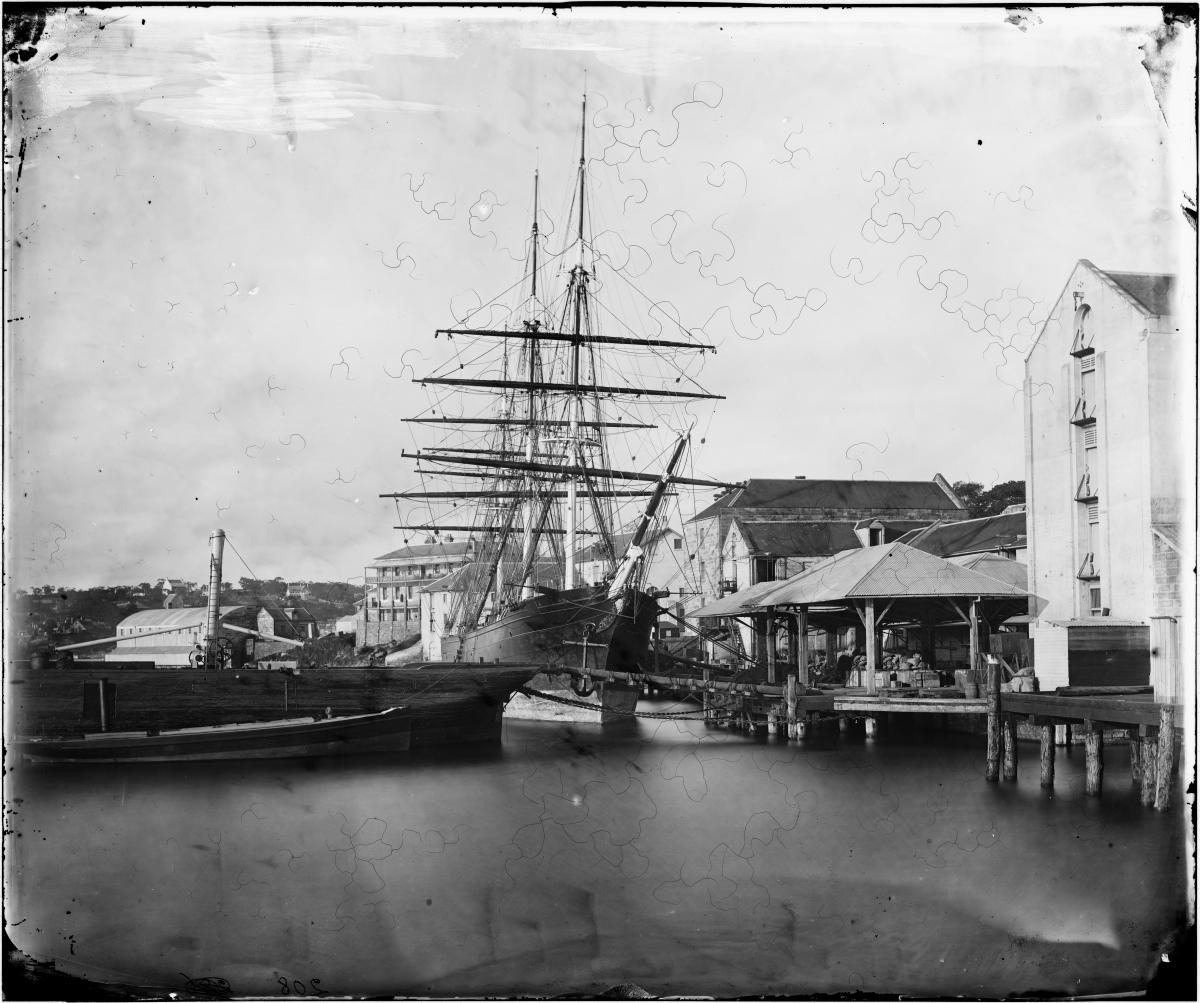
In the late 1800s, Sydney’s economy and culture was surging and Millers Point was one of the city’s busiest shipping precincts. Whilst the area had begun to decline as a residential area, Walsh Bay again prospered with the growth of the wool trade. For nearly half a century, the piers of Walsh Bay acted as a loading port for wool ships bound for the ‘old world’. Today, the wool bale elevators and jib cranes remain as part of the rejuvenated piers, testimonies to the thriving trading port of a bygone era.
1900s – The Bubonic Plague
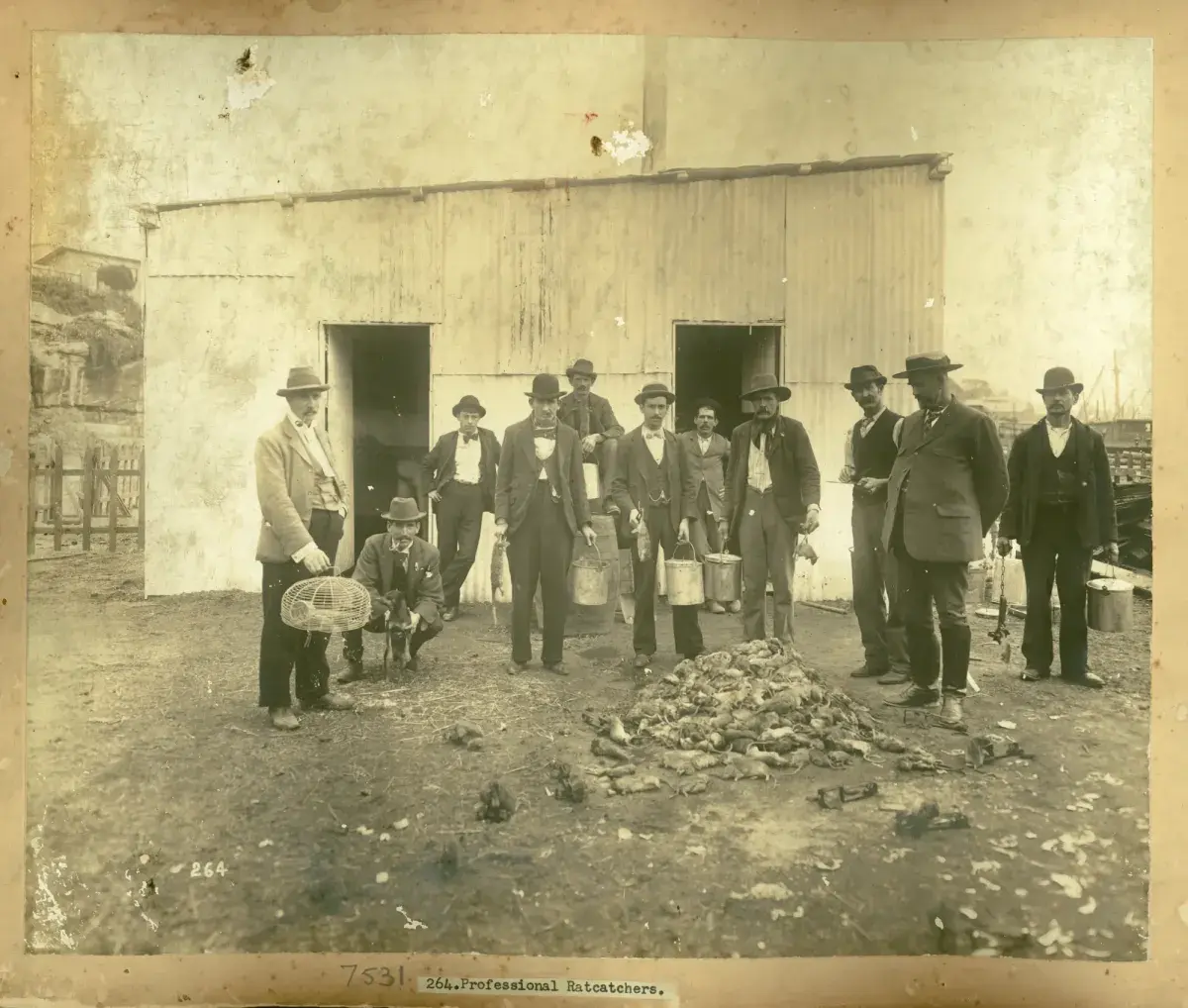
In the early years of the twentieth century, Walsh Bay and Millers Point were recorded as the location of a bubonic plague outbreak, later to be confirmed as transmitted by rats. After the rat plague, the government began to take steps to renew the wharves.
Walsh Bay Wharves were developed as an integrated port precinct comprising wharves, shore sheds, bond stores, bridges and roads. Considered technologically advanced for the time, the wharves precinct was designed by H. D. Walsh, the engineer-in-chief of the Sydney Harbour Trust who also supervised its construction from 1912 to 1922. Hickson Road, named after the Trust’s chairman Robert Purdon Hickson, was designed as a wide service road, excavated around the foreshore.
The works were considerably delayed by World War 1 and compounded by material supply problems. Extensive ballast strengthening was required under the two wharves due to the softness of the seabed, as below the wharves, the water reaches depths of over 17m. The distinctive timber wharf of Pier 2/3 attained heritage status in 1999.
The forgotten years
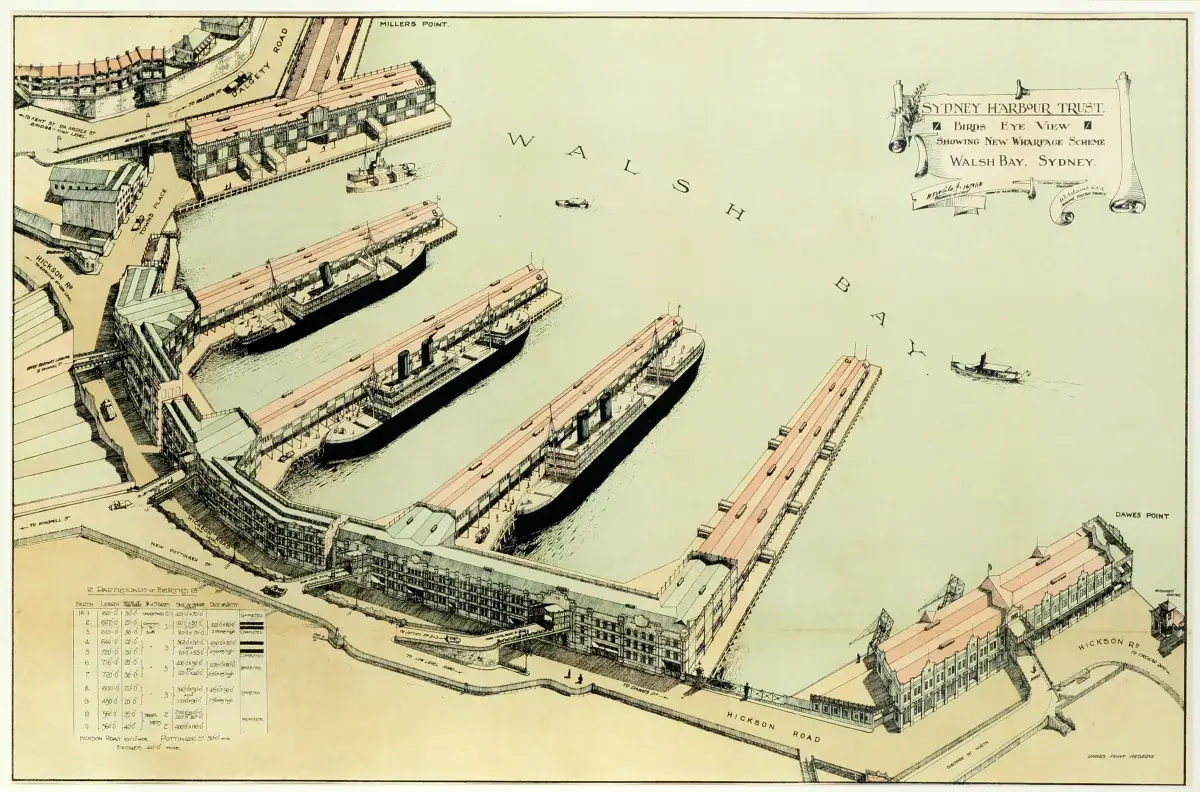
From the mid-1920s onwards the trading activity at Walsh Bay entered an era of steady decline. Whilst it was briefly used as a departure port for WW2 soldiers, it saw less and less activity until the 1970s. By this time, the advent of containerised shipping meant that the loading facilities were no longer adequate nor the piers of sufficient scale to support the larger trading ships. The activity moved elsewhere, and the once-thriving piers fell mostly silent.
1930s The Hungry Mile
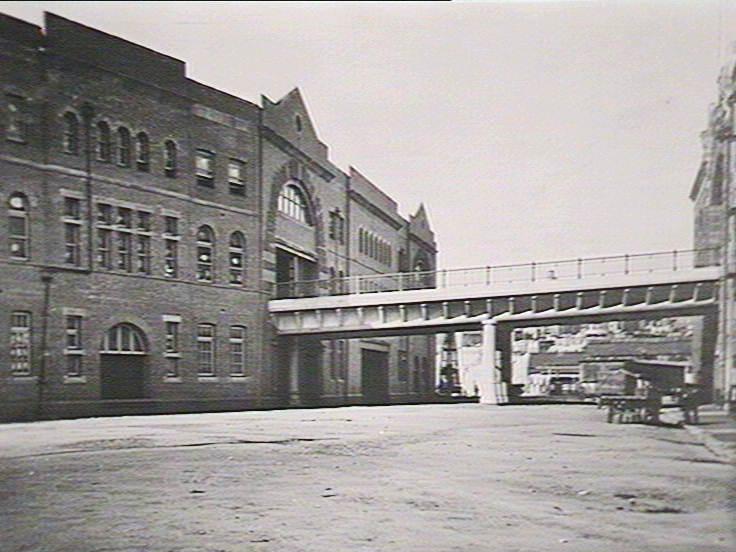
During the Great Depression, Hickson Road became known as ‘The Hungry Mile’, named by the harbourside workers who walked from wharf to wharf in search of low-paid work, often failing to find any. The competition for work between the maritime workers added to a sense of injustice, especially as the work diminished.
In 2009, the City of Sydney officially recognised the area’s colloquial name. At a naming ceremony, the secretary of the Maritime Union of Australia, Paddy Crumlin, explained: “The Hungry Mile is … a place where workers lived, worked, fought and died in the pursuit of decent living and working conditions, not only in this country but internationally.”
1980s

In the early 1980s, Walsh Bay began its cultural transformation. Sydney Theatre Company Administrator Elizabeth Butcher had the vision to propose the derelict Wharf 4/5 as permanent home for the recently-formed Company. More than three years of bureaucratic obstacles were overcome when on 12 September 1983, NSW Premier, the Hon. Neville Wran, announced the State Government had approved $3.5 million to finance the redevelopment.
Wharf 4/5 was converted into a performing arts home without sacrificing its historical integrity. Officially handed over to Sydney Theatre Company in 1984 and Sydney Dance Company in 1986, the design was awarded the John Sulman Medal for Public Architecture by the Royal Australian Institute of Architects. The architectural team was led by NSW Government Architect, JW Thomson in association with Vivian Fraser and Andrew Andersons.
2010s
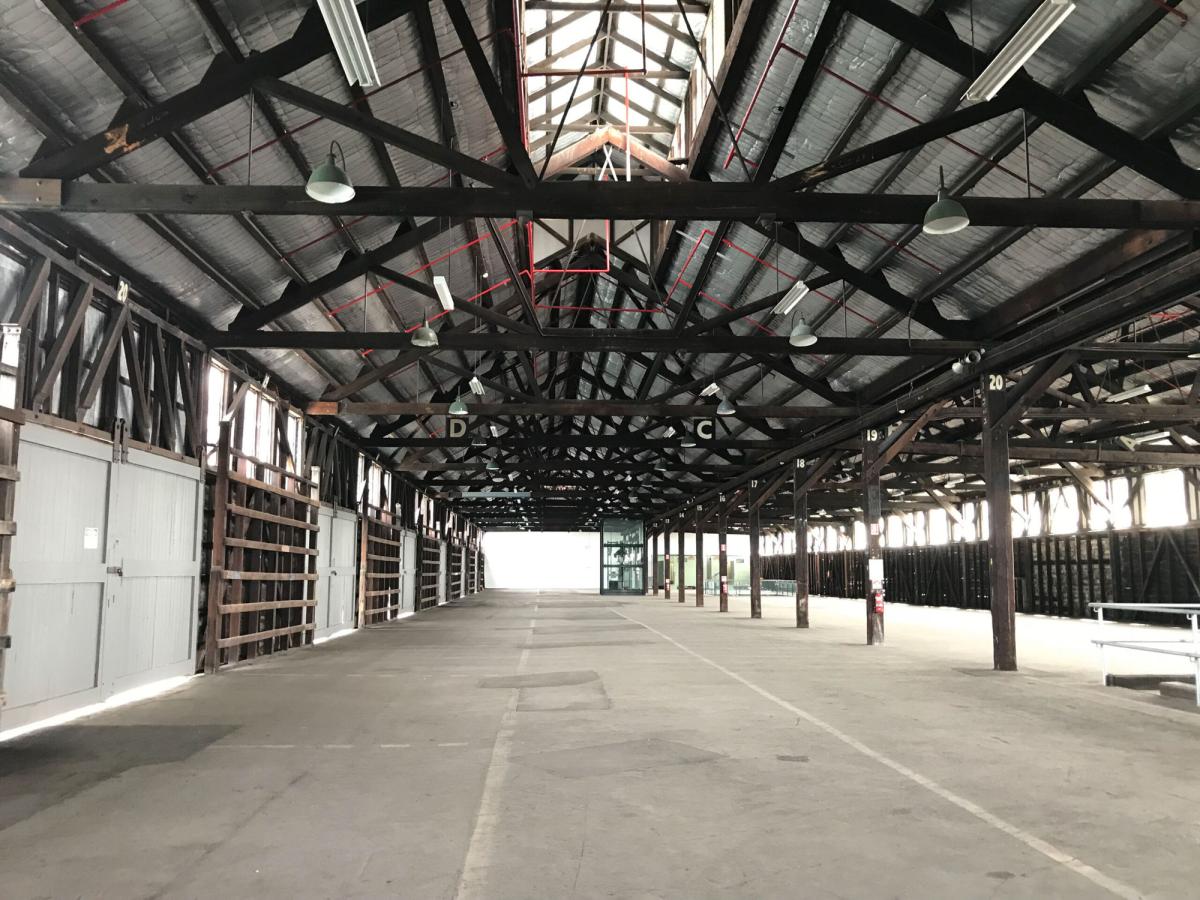
By 2016 Sydney Theatre Company had outgrown its home of more than 30 years. A new phase of development commenced, in tandem with the transformation of the rarely-used Pier 2/3. After considerable community and stakeholder consultation, construction commenced in 2018 and 2019.
2020s
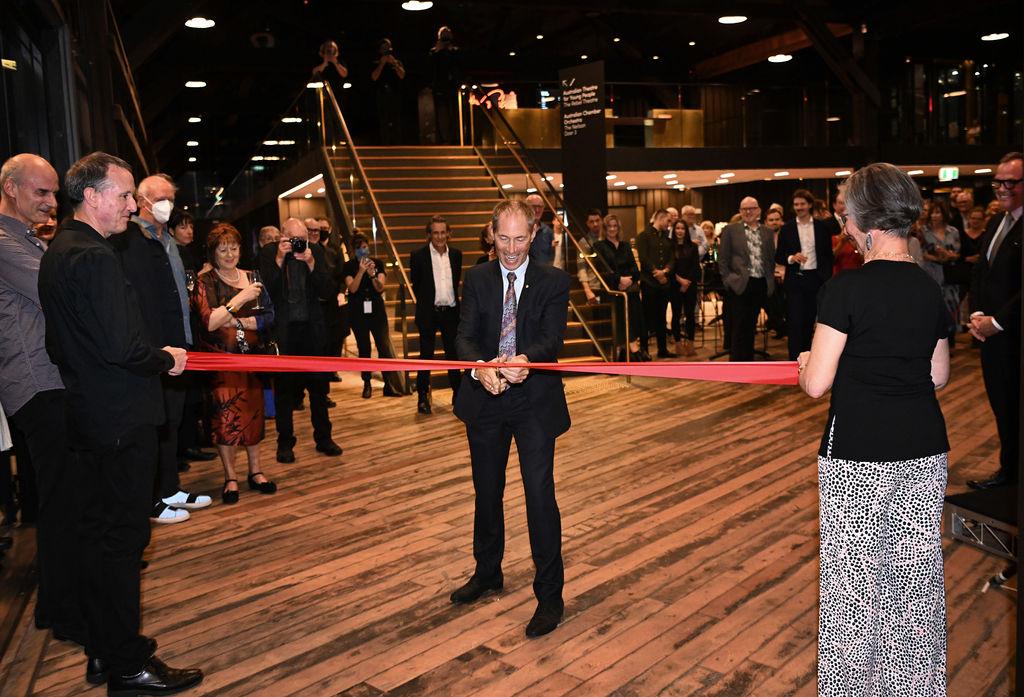
In 2020, the redesigned Wharf 4 and 5 was completed and in 2022 newly-resident companies of Pier 2/3 - Australian Theatre for Young People, Australian Chamber Orchestra and Bell Shakespeare – took residence in their homes.
Forging a Sustainable Future
The Walsh Bay Arts Precinct redevelopment has prioritised environmental sustainability with the installation of 900 state-of-the-art solar panels on Wharf 4/5. Traditional rooftop air conditioning units have been replaced by an innovative seawater cooling system, reducing power usage and noise levels.

